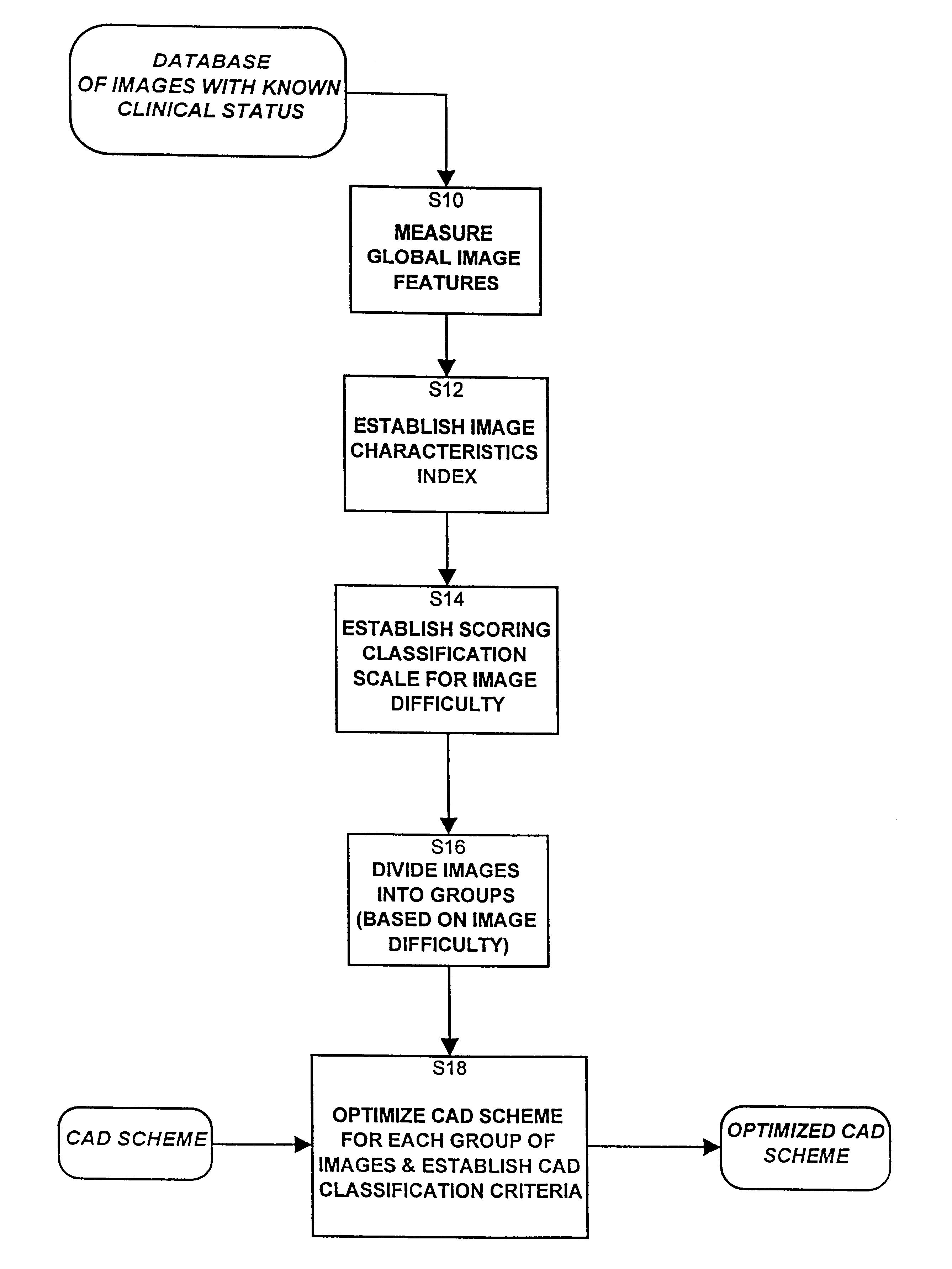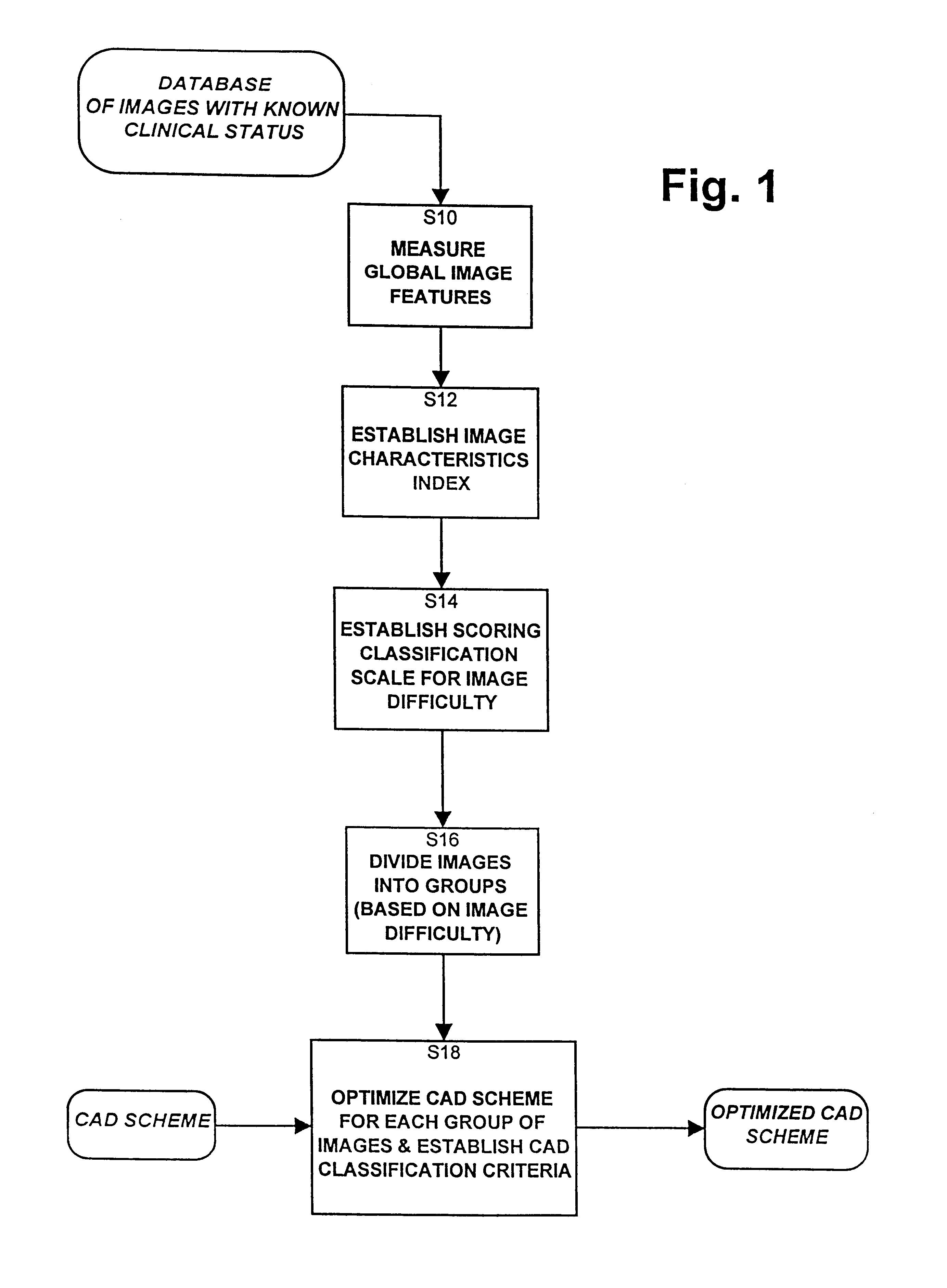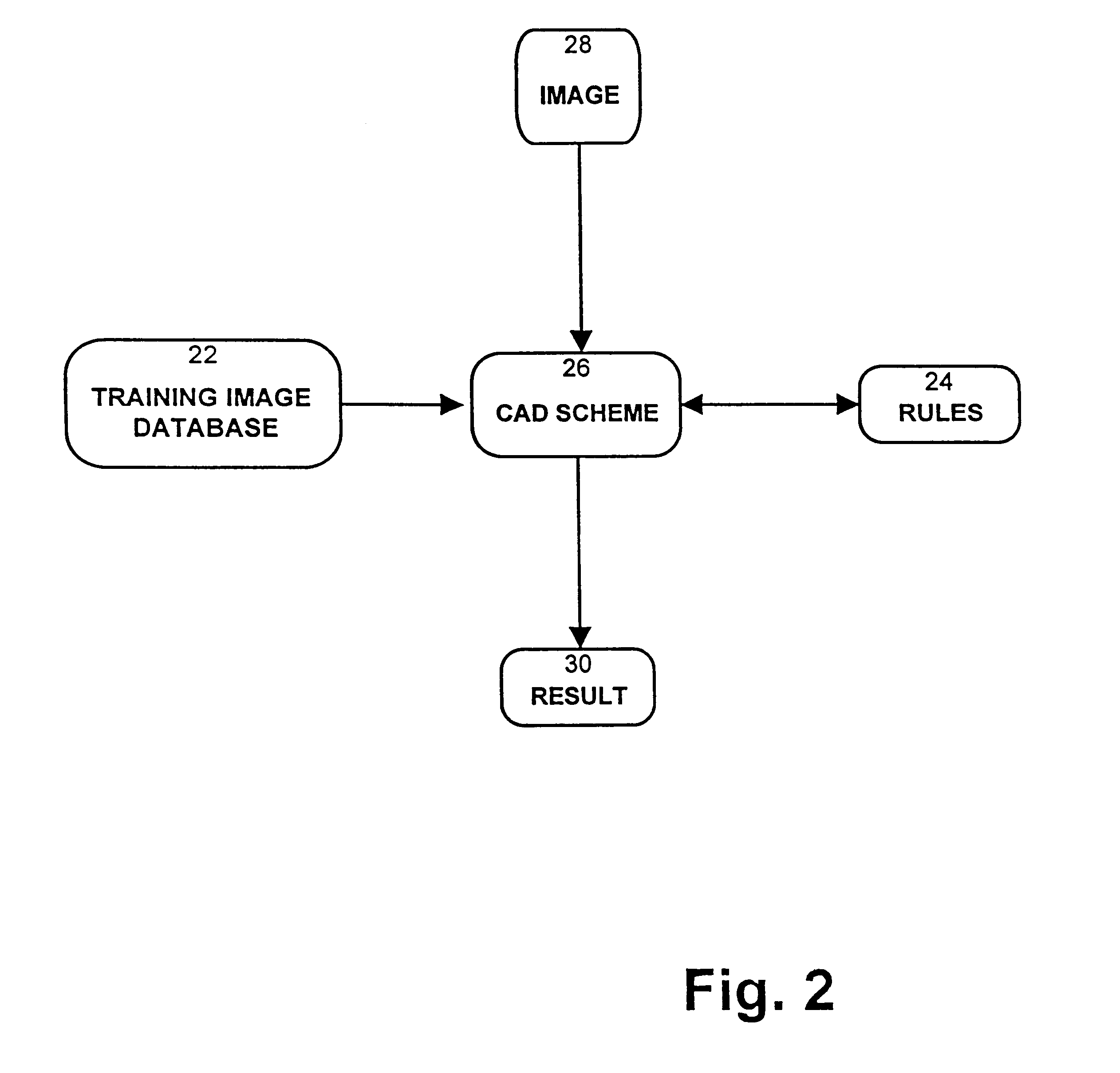Image quality based adaptive optimization of computer aided detection schemes
a technology of image quality and adaptive optimization, applied in image enhancement, image analysis, instruments, etc., can solve problems such as premature death in women, visual reading of mammograms, and the possibility of missing breast cancer in its early stages
- Summary
- Abstract
- Description
- Claims
- Application Information
AI Technical Summary
Benefits of technology
Problems solved by technology
Method used
Image
Examples
Embodiment Construction
The present invention operates in two distinct phases. The first phase consists of adapting and optimizing a CAD scheme based on global features of known images. The second phase consists of processing new images based on the (optimized) adapted CAD scheme. The adaptive phase can be repeated as new images are added to the set of known images, thereby improving the adaption.
The adaptive process of the first phase is described first with reference to FIG. 1. For each image in a database of known images of patients with known clinical status, that is, in a database of images which have been processed and which therefore have known results, global image features and characteristics are computed, for example, in the space and frequency domains (step S10). Based on the image feature distributions of all images in the image database, image global characteristics indices are established for each image (step S12). Next a scoring classification scale for global image characteristics is establ...
PUM
 Login to View More
Login to View More Abstract
Description
Claims
Application Information
 Login to View More
Login to View More - R&D
- Intellectual Property
- Life Sciences
- Materials
- Tech Scout
- Unparalleled Data Quality
- Higher Quality Content
- 60% Fewer Hallucinations
Browse by: Latest US Patents, China's latest patents, Technical Efficacy Thesaurus, Application Domain, Technology Topic, Popular Technical Reports.
© 2025 PatSnap. All rights reserved.Legal|Privacy policy|Modern Slavery Act Transparency Statement|Sitemap|About US| Contact US: help@patsnap.com



